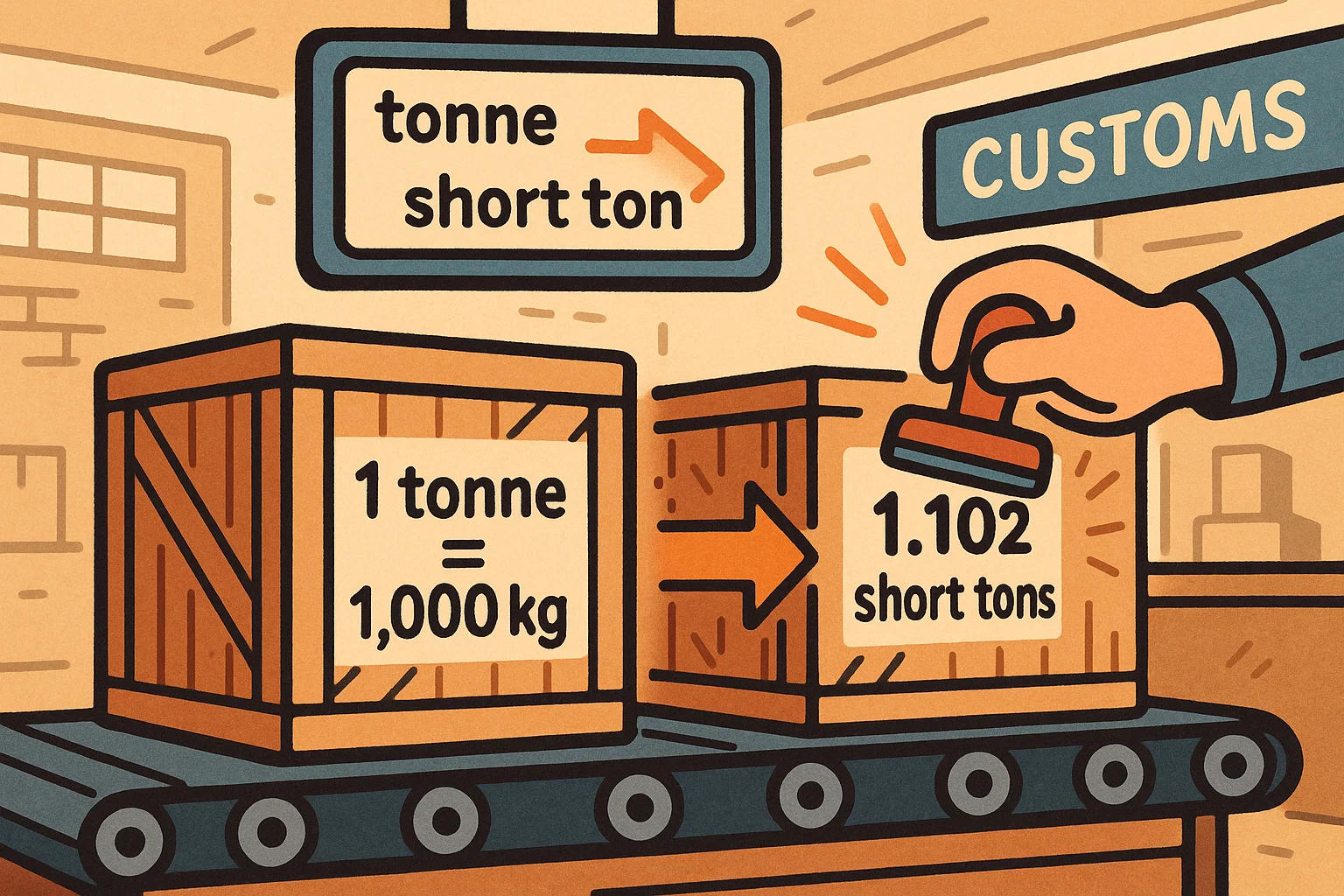tonne to short ton - How to convert t to short ton
Looking to convert tonne to short ton with precision? You're in the right place. Understanding how to convert t to short ton is crucial for industries like logistics, shipping, construction, and international trade. In this article, we’ll break down the differences between these two mass units, how to convert between them, and offer you interesting insights, fun facts, and historical references to enhance your understanding.
Whether you’re a student, professional, or just curious, Jetcalculator’s weight converter and unit converter tools can help you avoid costly conversion errors.

Understanding Tonne (t) and Short Ton (US ton)
A tonne (also called a metric ton) is a unit of mass equal to 1,000 kilograms, or approximately 2,204.62262 pounds. The tonne is part of the International System of Units (SI) and is symbolized as t. It is widely used across the globe, especially in Europe, Asia, and Africa, for everything from freight shipping to industrial production..
The short ton is a unit of weight used primarily in the United States and is equal to 2,000 pounds, or roughly 907.18474 kilograms. Unlike the metric tonne, the short ton belongs to the US customary system. In American contexts, the word “ton” typically refers to the short ton unless otherwise specified.
How to convert t to short ton:
1 short ton = 0.90718474 tonnes.
Did you know?
-
Shipping Terminology: In global maritime operations, “deadweight tonnage” uses tonnes to measure a vessel’s total carrying capacity, including cargo, fuel, and provisions. One large cargo ship can carry up to 200,000 tonnes!
-
The Eiffel Tower weighs about 10,100 tonnes. Built from wrought iron in 1889, this iconic Parisian structure is often used as a reference point for mass comparisons in the engineering and construction world.
-
Carbon emissions are tracked in tonnes. The Kyoto Protocol and the Paris Agreement measure CO₂ reduction goals in metric tonnes, not short tons. One tonne of CO₂ equals the emissions from driving a typical car 2,500 miles.
-
The EPA uses short tons when reporting greenhouse gas emissions in the U.S. For instance, the average U.S. coal-fired power plant emits around 3 million short tons of CO₂ per year.
-
🎢 Roller coasters are often built using short tons of steel. For example, the famous Steel Dragon 2000 in Japan was constructed with over 1,000 short tons of steel, making it one of the heaviest coasters in the world.
-
The U.S. produces about 13.5 million short tons of dairy annually. According to USDA data, that's enough cheese, butter, and milk to circle the Earth in dairy trucks more than 20 times!
When Tonnage Changed the Game
In the blockbuster movie “Man of Steel” (2013), Superman lifts an entire oil rig in one of the film's most jaw-dropping scenes. While it looks like pure fantasy, fans and engineers alike estimated the rig's weight to be over 100 tonnes. That number stuck, and it quickly became a favorite point of comparison in fan forums and scientific analyses.
But here’s the kicker: if the weight were assumed to be 100 short tons instead, it would weigh nearly 9,000 kilograms less. That’s a serious difference — and a reminder of how crucial accurate unit conversion is, even in Hollywood.
Conclusion
The difference between tonne and short ton is essential in our globally connected world. Whether you’re managing freight, calculating emissions, or just working on a school project, converting t to short ton accurately ensures clear communication and proper data handling.
👉 Try our explore our full-featured conversion for even more conversions across weight, volume, length, and more.

